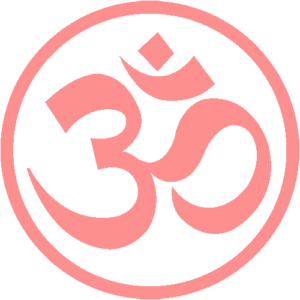Entretien avec Ludivine Leborgne – Ayurveda Magazine
Juillet 2017
André Riehl est un vrai yogi « Made in France », qui depuis son plus jeune âge poursuit la quête de la transcendance et de l’union. Sa vie en effet est un récit digne d’un roman initiatique : André a eu le privilège de croiser la route de bien des maîtres spirituels, des êtres accomplis et illuminés tels que Ma Ananda Moyi , mystique indienne libérée, qui fut aussi le guru d’Arnaud Desjardins ainsi que son épouse Véronique. Mais aussi Goenka Ji, grande figure bouddhique qui a créé les retraites Vipassana ô combien populaires à travers le monde, ou encore son maître, Chandra Swami qui lui permettra d’intégrer l’ensemble des enseignements reçus précédemment.
André Riehl nous livre un entretien profond, philosophique, poétique
sur le Nidra Yoga, sa spécialité. Il dresse un portrait sans concession
sur l’état du Yoga actuel à travers le monde et nous dévoile une
histoire de l’Inde oubliée, celle des hommes et des femmes vivant avant
l’ère védique, l’Inde à l’origine de la culture tantrique. Enfin, il
nous rappelle subtilement le but final de toute pratique de Yoga :
Samadhi, l’état d’unité.
Rencontre avec Ludivine
1. Cher André, qu’est ce que le Nidrâ Yoga, quelle est l’origine de cette démarche et enfin, pouvez-vous nous expliquer cette pratique ?
Le Premier sens de Nidrâ signifie bourgeonnement tel qu’il apparaît au printemps. Symboliquement cela représente cette force en soi permettant de réensemencer et renouveler des forêts entières, c’est-à-dire l’ensemble de nos richesses potentielles enfouies.
Le deuxième sens de Nidra est équivalent à celui d’éveil. Dans la symbolique indienne, il est représenté de deux façons : Lorsque Vishnu s’endort et entre dans le sommeil après avoir créé le monde. Il sait qu’en se réveillant ce monde sera abîmé et altéré par les humains. Il rêve alors le monde afin de s’en ressouvenir à son réveil et ainsi le reconstruire. Son rêve maintient le monde en activité. Selon la tradition vishnouïte, nidrâ est le sommeil de Dieu ; et nous, nous sommes le rêve de Dieu. Dans la culture Shivaïte, c’est un peu différent. L’un de noms de Shiva est : le « Seigneur du sommeil » ayant pour compagne la déesse universelle qui est parfois interprétée comme étant la « Nuit ». Shiva éclaire la nuit. En somme, il est celui qui révèle les profondeurs de l’inconscient et de l’inconnu. Ce deuxième point de vue sur le Nidrâ renvoie à l’état d’origine, à la nature même du vivant.
Le dernier sens de Nidrâ est beaucoup plus pratique : il signifie simplement « dormir », ou encore le « sommeil » qui contient deux catégories :
- le sommeil au moment du coucher le soir, ou bien lors de la sieste.
- sommeiller pendant l’état de veille, où l’on est comme absent, pas attentif à ce qui se passe.
Le bourgeonnement, l’état originel créateur de la vie, le sommeil ordinaire, l’absence d’attention dans la vie quotidienne sont les différents sens que l’on peut donner au terme Nidrâ.
Entre les 9ème et 12ème siècles sont apparus en Inde de nouveaux
enseignements écrits en Inde, les Tantra.
Tan dérive de la racine de tat
qui signifie Cela, quelque chose que l’on ne peut définir. Quant au
suffixe tra, il signifie protéger, préserver.
Tantra peut ainsi être compris comme « préserver ce que l’on ne peut définir ».
En Inde, depuis longtemps déjà, un énorme protectionnisme culturel
s’est développé à travers le système des castes, et aujourd’hui encore,
un renouveau nationaliste très fort se fait jour, remettant en avant
l’hindouisme, le védisme ou le brahmanisme.
Les védas, l’invention du sanskrit, le système des castes, la croyance à
la réincarnation, proviennent à l’origine d’une population venant
d’Asie centrale, les Aryens qui auraient envahit l’Inde, ou plus
précisément la plaine du Dekkan, il y a environ 4000 ans.
Mais la culture autochtone s’est maintenue malgré l’invasion des Aryens, et ces peuples se retirant dans les forêts ont conservé des enseignements ancestraux, qui rédigés plusieurs siècles plus tard sont devenus cet immense corpus dénommé tantras.
En somme, ces tantras sont la transcription d’une connaissance et d’un enseignement qui se transmettaient oralement depuis des millénaires. Le Nidrâ Yoga appartient à ce courant tantrique. Et il se trouve que depuis des siècles et aujourd’hui encore, bon nombre de formes de yoga issus du védisme et du brahmanisme rejettent ces enseignements plus anciens.
Le Nidrâ Yoga provient d’hommes et de femmes qui vivant dans des forêts étaient en relation très intime avec la nature. Et comme tous les autres humains, ils se posaient les questions : « Y a-t-il une origine à la vie, existe-t-il un créateur, est-il possible de le connaître ? … » Partout sur notre planète, lorsque les hommes ont été confrontés à la nature, du seul fait d’y vivre quotidiennement, ces types de questions se sont posées avec acuité.
En Guadeloupe par exemple, il existe encore des communautés menant une vie contemplative très proche de la nature. Leur quotidien n’est pas surchargé d’activités, de projets, de désirs… Ils cultivent la terre, mangent, dorment et vivent paisiblement ; et cette vie contemplative et naturelle produit bien évidemment des états d’une plus grande sensibilité donnant accès à une connaissance directe et intuitive du vivant.
Le mouvement, l’activité de la nature a été appelé shakti dans le shivaïsme ou prakriti dans l’hindouisme classique.
Et la fonction créant et percevant cette même nature a été appelée Shiva dans le tantrisme et Purusha dans la culture classique hindouisme.
Des millénaires sont passés, beaucoup de croisements ont eu lieu entre les différentes écoles de pensée, et diverses philosophies ont donné lieu à une constellation de démarches et d’approches très souvent constituées d’amalgames. De sorte qu’aujourd’hui les traditions du Yoga en Inde (ne parlons que de cela) sont un mélange de quantités d’approches différentes produisant assez rarement cet état de conscience qui est dit Unifiant. Par contre, elles produisent beaucoup de diversités quant aux exercices pratiques.
Le Nidrâ Yoga quant à lui, est une méthode ayant été transmise essentiellement oralement dans le milieu ascétique, et son origine historique reste imprécise. Cependant, j’ai pu faire des recherches de deux types, la première au travers de rencontres et d’entretiens ainsi que de quelques rares écrits. La deuxième quant à elle fut une sorte d’enquête dans la mémoire.
Le nidrâ yoga contient des exercices permettant de retourner très loin dans la mémoire de l’humanité.
Et bien que cela puisse être considéré comme subjectif il semble très
probable que cet enseignement émane d’un temps remontant à la
préhistoire.
L’état de nidrâ était alors vécu au cours d’un type de marche favorisant la contemplation…
2. Pouvez-vous resituer le Nidrâ Yoga dans le contexte plus particulier lié à Pantajali* « Yoga Sutra » ? Est ce que le Nidrâ Yoga s’inclut dans de ce yoga des huit branches ? Et au fond, quel est le but de cette pratique : l’illumination, la libération ?
La seule chose que pointent toutes les formes de Yoga, absolument toutes, est ce que vous appelez « illumination, libération». Il n’existe aucune forme de Yoga s’intéressant à autre chose, y compris Pantanjali.
Depuis 50 – 60 ans, le yoga a été très corrompu par des personnes
ayant mis en avant les effets secondaires que produisent quelques
exercices. Elles ont mis en avant ces effets secondaires au prétexte de
se défaire du stress, mieux dormir, avoir moins mal dans son corps,
avoir une pensée un peu moins confuse…
Le fait d’en présenter une origine dite traditionnelle permettait
d’entretenir cette corruption des enseignements en insistant sur ces
effets secondaires. Et on ne sait très bien pour quelles raisons les
« Yogas sutras » de Patanjali ont pris une importance aussi
considérable, essentiellement hors de l’Inde…
En étudiant, les Yoga Sutra de Patanjali, on constate qu’il parle très peu du nidrâ. Selon les traducteurs – parce qu’il y a toujours la question de la traduction, plus de 35 en français et plusieurs centaines en anglais – le nidrâ est pris au sens de sommeil. Pantajali le présente comme un obstacle au Yoga (union – la libération). Il est possible cependant que Patanjali ait voulu signifier par là l’absence d’attention.
Dans les voies tantriques shivaïtes, il est annoncé l’existence d’un
état au-delà de l’éveil et du sommeil dont l’état de nidrâ est en
quelque sorte la porte d’accès. Il existe également un enseignement très
approfondi tenu quasiment secret sur la respiration du sommeil faisant
référence au prananidrâ reliant une forme très subtile du pranayama à
l’intérieur d’un des états situés dans le sommeil profond, sans rêves,
qui est étudié dans la pratique très avancée du nidrâ yoga.
Cet enseignement insiste beaucoup sur ce point disant que la raison du
pranayama est de déclencher la respiration du sommeil. C’est un mode
respiratoire que l’on a lorsqu’on est en sommeil profond mais en restant
éveillé, vigilant et attentif. Dans ce mode, il y a toujours les
inspirations et les expirations, les suspensions poumons pleins et
poumons vides. Mais on parle d’un autre type de suspension dans laquelle
le dormeur perd la conscience de son identité, la conscience d’être
séparé du restant du monde, vit et découvre cet état d’Unité appelé
libération ou l’illumination.
L’accès à cet état est assez rare car son approche déclenche souvent des expériences intérieures de toutes sortes qui la plupart du temps perturbent la tranquillité de l’observation et entretiennent une sorte d’attachement ou d’identification. On a l’impression qu’il nous arrive quelque chose personnellement : cette expérience intérieure me plait, elle est intéressante, ou bien elle me questionne… mais surtout, elle crée le sentiment qu’il y a quelqu’un que j’appelle MOI qui est en train de vivre une expérience. Et cette division que déclenche cette expérience intérieure entre moi et l’objet de l’expérience éloigne énormément de cette possibilité de libération, de l’état d’union. Et, c’est là que se situe l’apprentissage dans la méthode du Nidrâ Yoga. Il s’agit peu à peu de déconstruire les processus d’identification qui sont nombreux et qui sont surtout très puissants. Ce sont des conditionnements très anciens qui ne sont pas uniquement personnels, mais des conditionnements inscrits dans le psychisme humain. Il faut les déconstruire afin de moins se faire prendre lors d’une expérience intérieure et de ne pas enclencher une identification immédiate. Il faut aussi et enfin comprendre que toute expérience intérieure est l’élimination d’un encombrement contenu dans la mémoire.
Nous sommes ici très loin du point de vue de Patanjali qui considérant nidrâ, en tant que sommeil selon les traductions, en fait un obstacle la libération.
Nous sommes ici complètement à l’opposé de ce point de vue, en affirmant qu’il est possible de rentrer consciemment dans le processus du sommeil. Et qu’il est possible dans ce processus de décortiquer les conditionnements de l’esprit humain qui ne sont pas que personnels. Dans le déroulement de déconditionnement de l’esprit humain, il peut arriver qu’il y ait des éclairs de non-identification où se produit cette évidence de l’unité ; celle ci ne surgit que parce que des mémoires conditionnées produisant le phénomène d’identification ont été libérées.
La libération consiste à déconstruire les enchaînements qui nous conditionnent. Elle réside dans le fait d’enlever les voiles et opacités nous empêchant de percevoir notre véritable nature. Autant dans les traductions de Patanjali, on peut entendre qu’il y a quelque chose à atteindre, autant dans ces voies tantriques, on insiste sur l’affirmation qu’il n’y a rien à atteindre. On a essentiellement à nous désencombrer des conditionnements. Ce désencombrement révèle que nous sommes la VIE elle-même. On ne l’atteint pas.




